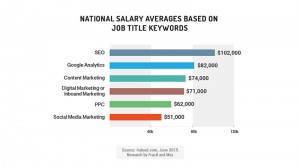Building more talent density and improving the quality of your deliverables are two essentially linked challenges that you must address to build long-term organizational success.
But these aren’t issues you should seek to address through hiring alone, especially if you’re not in a position to outbid your competitors for the services of top talent.
Luckily, you can improve your organization’s output simply by adopting practices that allow your team to find greater purpose and satisfaction at work. A study from Gallup shows that happier, “engaged” employees are 17% more productive and that companies with an engaged workforce are 21% more profitable than their competitors.
Building an engaged workforce doesn’t mean installing a lunch buffet or offering on-premises dry cleaning, as you might expect. The pandemic-fueled rise of remote & hybrid work models, the mass adoption of co-working spaces, and the evolving priorities of younger workers have all undermined the campus-based corporate cultures that were ubiquitous throughout the aughts.
Millennials & Zoomers expect to work in environments where they’re celebrated, coached, given ownership of their time and empowered to find purpose and meaning through their contributions. And Gallup finds that addressing these expectations produces better business outcomes for employers.
Getting started can seem daunting, but it needn’t be. Here are 7 ways to help your existing employees self-actualize through their roles and unlock their working potential:
1. Treat Diversity & Inclusion As Foundational Priorities
As Millennials and Zoomers become the backbone of our national workforce, they’re remaking the workplace according to their priorities. According to a comprehensive survey from PWC, those priorities boil down to purpose, work-life balance, and peers. Work isn’t just where we punch a clock; it’s where we make friends.
By extension, most prefer workplaces that foster social connection and encourage self-expression. And that means we expect our jobs to provide safe, inclusive spaces for that expression.
You may feel that it’s already a challenge to hire qualified candidates, let alone people who represent a diversity of experience and backgrounds. But if you don’t prioritize “D & I,” you stand to face a shrinking candidate pool, reduced market share, and lower profits over the long term. Those aren’t talking points; they’re findings from the latest comprehensive study by Oracle.
Thankfully, the rise of remote work paradigms has made it easier than ever to expand your hiring to new markets. Opening your next candidate search to a regional or even national talent pool will expose you to skilled professionals from all walks of life and dramatically improve your odds of finding that perfect-fit prospect.
2. Give Your Team Ways To Contribute to Their Greater Good
Your employees are your largest group of stakeholders, and if you’ve read Setting The Table by uber restaurateur Danny Meyer, you know they’re also your most important. As Meyer points out, your business is your employees. And if you intend to fully capitalize on your organization’s growth potential, your first priority should be finding ways to help your team members self-actualize through their work.
That means providing fair benefits, skill-building opportunities, and mentorship. But it also means finding ways to ensure that the impact of your teammates’ efforts is closely aligned with the values they express. In fact, Deloitte found that more than 70% of millennials expect their employers to focus on ameliorating societal or mission-driven problems.
One great way to create more alignment between your day-to-day and your employees’ values is to invite your colleagues to help shape your Corporate Social Responsibility program. Your employees create a tangible link between your business and your community–they work for you, but they live out there. And that often leads them to develop valuable insights as to how your business might better contribute to the daily life of your town, city, or core constituency.
Harnessing this knowledge will allow you to surface the issues your team cares about most and address them in meaningful, collaborative ways. Remember, you hired your teammates to enrich your company with their skills and perspectives, and they came to work for you because they believe in your mission. Leverage. That. Synergy.
3. Empower Your People By Removing Traditional Workday Controls
Millennials and Zoomers are all about finding the optimal work-life balance. 83% of Millennials cite work-life balance as the #1 factor they consider when evaluating a job prospect, and over 70% have left or considered leaving a job that didn’t offer enough flexibility.
Translation: treating your employees like they need a hall pass whenever they want to go jogging or visit the doctor won’t make anyone happier or more productive. Instead of trying to own their time, consider removing workday controls like enforced work hours and vacation limits by resetting expectations around deliverables and project milestones.
4. Model A Culture of Ownership & Accountability
If you run a business, mistakes are inevitable. But if you’ve established a workplace culture where mistakes aren’t acceptable, you’ll implicitly discourage your colleagues from owning, correcting, and learning from errors when they arise.
A team that isn’t empowered to examine its mistakes will simply keep making them, compounding any existing issues that may be lurking in your processes. Over time, your culture will develop to protect those who most effectively deflect responsibility and erode the good habits of those who enter your organization with a growth mindset.
The cure for this issue is to establish avenues for candid, consistent two-way feedback. And the research says that one effective way to do this is to increase the frequency of performance reviews from once annually to once quarterly.
Deloitte adopted this exact practice in 2020 after finding that “companies that revisit goals quarterly have threefold greater improvement in performance and retention than those that revisit goals yearly.”
5. Build Professional Development Into Your Performance Review Process
As we discussed above, frequent performance reviews are essential to the health of your business because they provide a formal means for celebrating your colleagues’ strengths and addressing their areas of opportunity.
They’re also perfect moments to promote greater job satisfaction by helping your teammates map their career goals and plan the next phases of their professional development.
Data from SAP SuccessFactors shows that millennials overwhelmingly prefer to work in environments where they receive monthly or quarterly feedback, pathways to grow, and recognition for their good work.
And that’s why many companies are moving on from traditional performance reviews that focus on past outcomes and embracing professional development touch bases meant to facilitate continued growth.
Building professional development planning into your review process will help you lower attrition and increase job satisfaction. Plus, providing your employees with formal pathways to grow will improve your organization’s skills and knowledge base.
6. Foster Intrapreneurship To Surface Game-changing Ideas
In search of the next big idea that will make your company millions? Someone you work with every day might already be cooking it up. That’s the principle behind Toyota’s vaunted Kaizen (continuous improvement process) model, which solicits constant employee feedback at all levels of the company and turns the very best ideas into business-building practices.
In the 80s, Toyota used the Kaizen model to perfect their assembly-line methodologies, succeeding to such a spectacular degree that GM eventually built a cooperative factory with them in California just to learn their secrets.
You can promote intrapreneurship with both soft and hard methods. Soft methods include fostering idea-sharing via affinity groups like book clubs, organizing lunch’n learn exchanges, or maintaining a Slack channel where anyone can submit their good ideas.
Hard methods include offering companywide bounties for solutions to particularly sticky problems, organizing regular interdepartmental brainstorming sessions, or even trotting out a simple, effective suggestion box.
7. Read Up On How Successful Business Leaders Build Winning Cultures That Scale
The culture of work is changing fast, and it can be tough to stay abreast of all the latest incentives, inducements, and workplace trends while you’re trying to grow a business. That’s why it pays to treat your team according to a logical, flexible set of principles that will scale with you.
There are lots of great resources out there pertaining to intentional HR, but my favorites allow me to tap into the experiences of the entrepreneurs who’ve been there. Their knowledge tends to be practical, replicable, and relevant. Two sources that I consult all the time are Setting the Table by celebrity restaurateur Danny Meyer and No Rules Rules by Reed Hastings & Erin Meyer.
Setting The Table is full of great insights on how to think about your team in human terms and help your organization’s internal stakeholders grow in their roles. No Rules Rules brings readers inside the rise of Netflix, detailing how the company built itself into a global juggernaut around a culture of honest feedback and relentless self-improvement. Both are great books on how to build organizations that out-talents the competition, and their complementary perspectives prove there are many routes to the top of the mountain.
Business & Finance Articles on Business 2 Community
(21)






